|
Rideau Junction
With a follow up letter from Robert Sandusky  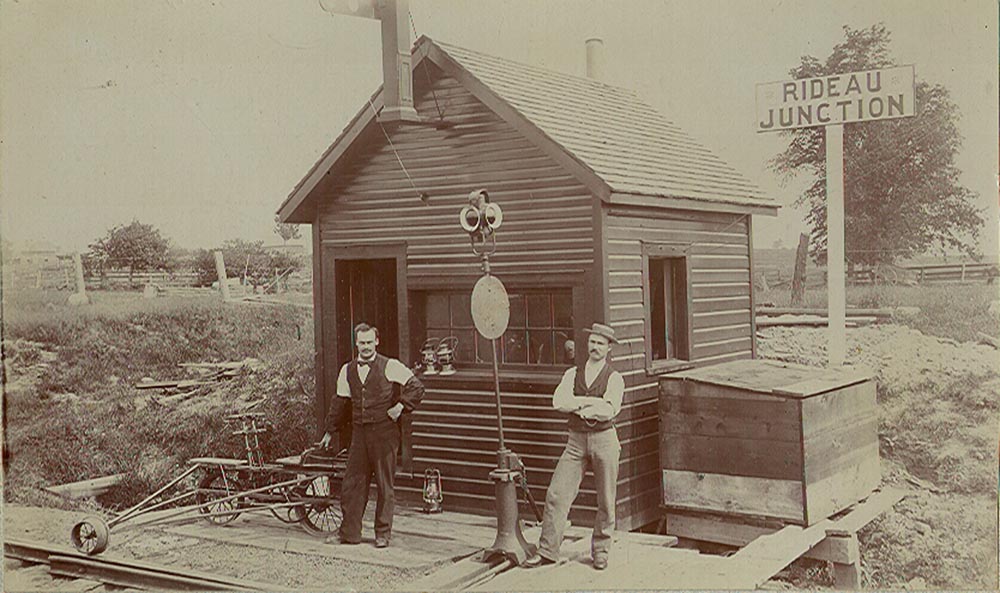 I recently received a copy of the above
photo from Graham
Neale who asked me where Rideau Junction was located.
It is a wonderful study of a small, new
building showing an operator with a bow tie and black arm covers and
another
man, possibly a switch tender, in a hat standing on a small platform
with a
switchstand. A velocipede, similar to
that owned by the Bytown Railway Society, is on the platform and is
probably
the telegrapher's means of travel to work. This
seemed like a good project for the Dennis Peters’ data base of stations
revealed two Rideau
Junctions at varous times in
So which Rideau Junction does this picture illustrate? We have come to the conclusion that this is the earlier, Canada Atlantic, structure for the following reasons:
This plan shows the general area in which
Rideau Junction was located, taken from a Grand Trunk Railway plan
dated 1913. The Grand Trunk 18 June 1905 timetable shows Rideau Junction at 1.5 miles from Central Depot (call letters CD), and only 3 minutes on the timetable from CD, with a day and night operator and call sign JU. At the CAR board meeting of 24 October 1911, (the CAR was still in existence although it was controlled by the GTR until it was absorbed in 1914) $183.80 was approved for a new operators shelter at Rideau Junction (at the west end of the Further changes took place in 1914 when a connection was laid between the Canadian Northern and Grand Trunk at Hurdman to allow Canadian Northern passenger trains access to Central Station.  both ends of the CNOR GTR interchange tracks;
both ends of the CNOR GTR interchange tracks; the switches to the double track and Ottawa Gas.
the switches to the double track and Ottawa Gas.Rideau Junction is shown in the GTR employee timetable of May 3, 1914 but the June 25, 1916 timetable shows This interesting picture has provoked much discussion among the members of our group. Now, if only we could come across a picture of the other Rideau Junction. 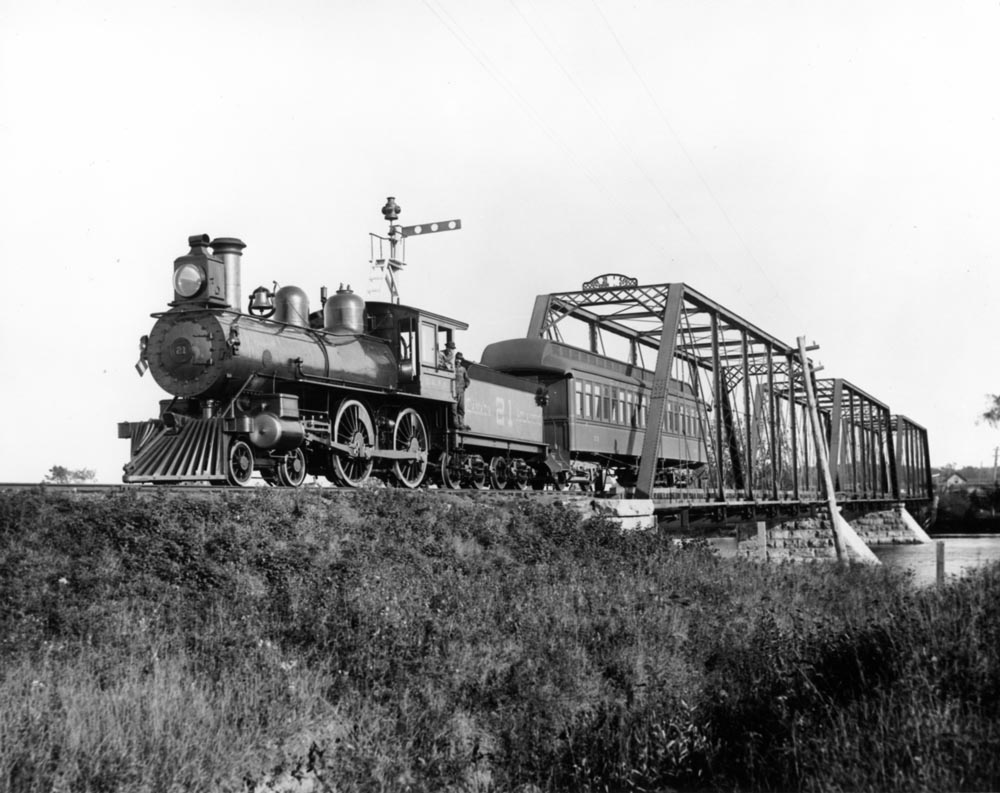 Bytown Railway Society, Branchline, September 2007. Follow Up Letter from Robert Sandusky
Rideau Junction: I commend Colin Churcher for the article on Rideau Junction in the September Branchline. Sleuthing old photos is always great sport! Especially when teasing bits of reference material are available. I was intrigued by the small piece of trackwork visible in the scene. The placement of a guard rail so close to the switch stand challenged my memory of any conventional switch I've ever seen. Unfortunately the original photo guards its secret well. Or does it? The curved, movable rails of stub switches did not have the encumbrance of extra guard rails to impede their flexibility. In addition, what shows in the photo does not appear to have any moving parts or slide plates. Thus I thought we might be catching a glimpse of part of another switch or else an early experimental switch design. The former possibility might occur at the entrance to a yard where a ladder track begins. There, the frog and guard rails of one switch could be right up against the points of the next. However, Colin has indicated that this is a junction rather than a yard so I have discounted that possibility. Alternatively, some early switch experiments might suggest possibilities. The MacPherson switch was used by the CPR in the 1 890's but the specification for that design place the far end of the guard rail only 3'-6"from the throw rod of the switch stand. The photograph appears to show a distance of greater than 6 feet which may not be properly placed for such a device. Refer to the diagram where "A" shows the position of the building.  Then there is the Wharton Safety switch but its guard rail only runs even with the 'points' rather than past them and I don't know if it was even used in Canada. 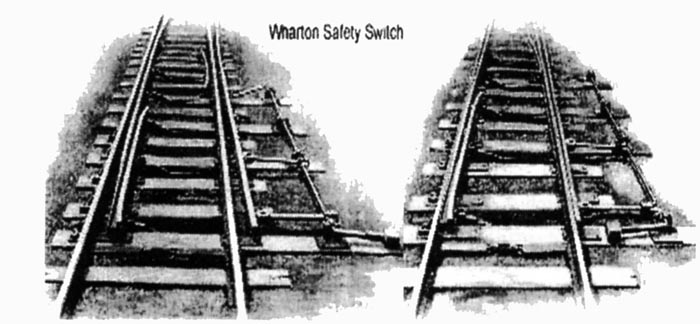 Being a junction, perhaps a level crossing with a single slip switch might qualify. Refer to the single slip switch diagram, again showing "A" for the building site. Then again, this might be too elaborate for a simple junction. 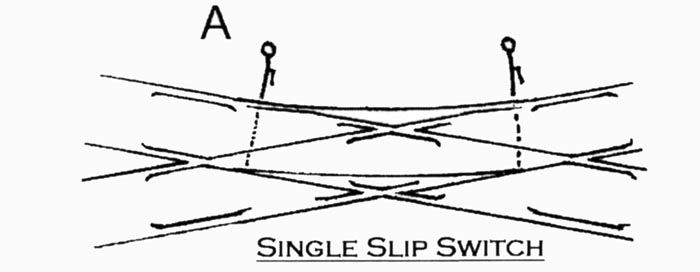 This brings me to the possibility of a derail. One might well expect to see such a device at a junction. The accompanying diagram suggests an uncomplicated design which I submit as a possibility. One hopes that some future photo find of the C.A.R. might cast further light on this small mystery. 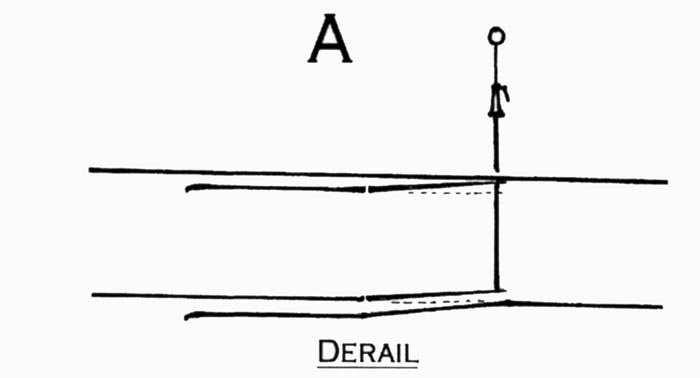 Bytown Railway Society, Branchline, November 2007.  I may finally have found the answer as I paged through a recently-acquired copy of "Canadian Pacific to the East - The International of Maine Division". Page 51 has a 1901 Heckman photo (reproduced below) of the siding at Elliott, Maine, which has an early form of stub switch that seems to fit what little we could see at Rideau Junction. I believe one can even see that final spacer bolt on the guard rail in the Rideau Juhnction view. It seems a good match to me. [Robert Sandusky, Oakville, ON] |
![]()